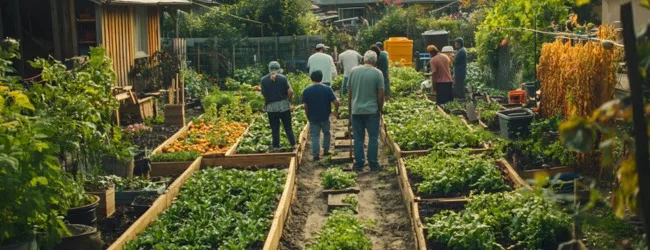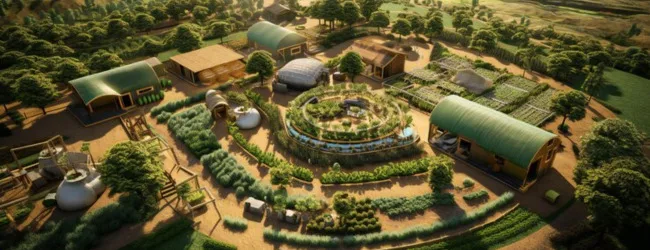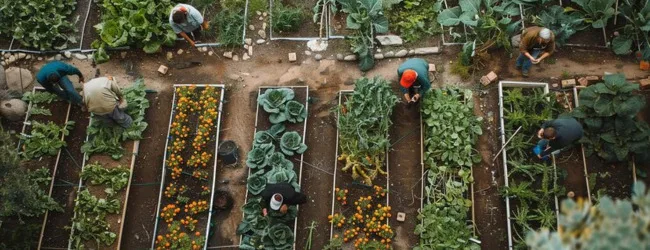Table of contents
- What is Permaculture Farming?
- Why Permaculture Farming in India?
- Components of Permaculture Farming
- Setting Up a Permaculture Farm: Step-by-Step Guide
- What Can You Grow?
- Earning from Permaculture Farming
- Cost of Setting Up (1 Acre Permaculture Farm)
- Benefits of Permaculture Farming
- Challenges to Consider
- Government Support & Training
- Conclusion
- Frequently Asked Questions (FAQs)
Permaculture farming is a sustainable and self-sufficient way of growing food that mimics natural ecosystems. It combines traditional farming practices with modern techniques to create a low-waste, low-maintenance, and high-yield farming system, making it ideal for India’s diverse climate and rural economy.
What is Permaculture Farming?

Permaculture is a blend of “permanent” and “agriculture.” It is a holistic approach to farming that focuses on:
- Creating self-sustaining ecosystems
- Reducing external inputs (like fertilisers and pesticides)
- Maximising the use of renewable resources
Key Principles of Permaculture:
- Observe and Interact: Understand your land and its patterns.
- Use and Value Renewable Resources: Harvest solar, wind, and water.
- Produce No Waste: Compost and recycle all farm outputs.
- Integrate Rather Than Segregate: Grow crops and livestock together.
- Use Small, Slow Solutions: Start with manageable systems.
Why Permaculture Farming in India?
Relevance:
- India has over 146 million hectares of agricultural land
- Rising input costs and climate change are forcing farmers to adopt sustainable methods.
- Permaculture reduces dependency on costly inputs, saving 40-60% on average.
Current Adoption in India:
- Popular in Andhra Pradesh, Maharashtra, Karnataka, and Tamil Nadu.
- NGOs like Aranya Agricultural Alternatives are promoting it successfully.
Components of Permaculture Farming

1. Zoning System
- Divide the farm into zones (Zone 0 to Zone 5) based on the frequency of human use.
2. Diverse Crop Plantation
- Use polyculture instead of monoculture.
- Integrate vegetables, fruits, herbs, and trees.
3. Water Harvesting
- Install swales, ponds, and rainwater tanks.
4. Composting & Waste Management
- Organic waste is turned into compost.
5. Natural Pest Control
- Companion planting and introducing natural predators like ducks and frogs.
Setting Up a Permaculture Farm: Step-by-Step Guide
| Step | Description |
|---|---|
| 1 | Survey the land & climate |
| 2 | Create a zone map |
| 3 | Design water harvesting systems |
| 4 | Choose suitable crops and trees |
| 5 | Build soil health using compost, green manure |
| 6 | Set up natural fencing with native plants |
| 7 | Introduce animals like chickens or goats if needed |
💡 Pro Tip: If you want to start a Business but have too many doubts, connect with a Business expert from Boss Wallah for guidance – Check Out
What Can You Grow?

Best Crops for Indian Conditions:
- Fruits: Mango, Banana, Papaya, Guava
- Vegetables: Tomato, Brinjal, Chillies, Spinach
- Grains: Millets, Pulses, Rice (with water harvesting)
- Herbs: Tulsi, Mint, Lemongrass
- Timber & Nitrogen Fixing Trees: Neem, Subabul, Gliricidia
Earning from Permaculture Farming
Multiple Income Sources:
- Fresh produce sale (vegetables/fruits)
- Herbs and Medicinal Plants
- Value-added products: Pickles, oils, herbal teas
- Workshops & Farm tours
- Seed saving & sale
- Animal products: Eggs, milk, manure
Real Example:
- Anand Permaculture Farm in Telangana earns over INR 8 lakhs annually by selling organic produce and conducting permaculture training workshops.
ALSO READ | Indigo Farming: How to Start, Demand, Profit Margin & More
Cost of Setting Up (1 Acre Permaculture Farm)
| Expense Item | Estimated Cost (INR) |
| Land Preparation | 20,000 |
| Water Harvesting | 30,000 |
| Compost & Seeds | 15,000 |
| Trees & Saplings | 20,000 |
| Fencing & Infrastructure | 25,000 |
| Tools & Labour | 20,000 |
| Total | 1,30,000 |
Note: Costs vary based on location and land condition.
ALSO READ | Rice Farming: Complete Guide for Profitable Yields
Benefits of Permaculture Farming

- Reduces water use by 30-50%
- Cuts input costs by over 50%
- Improves biodiversity and soil health
- Increases yield stability over time
- Eco-friendly and climate resilient
Challenges to Consider
- Requires time to understand the ecosystem
- Initial returns may be low in first 1-2 years
- Market access for organic produce
- Knowledge gap among traditional farmers
Government Support & Training
- Paramparagat Krishi Vikas Yojana (PKVY): Supports organic and natural farming.
- National Centre of Organic Farming (NCOF): Training and certification help.
- NGOs like Aranya and Sahaja Aharam offer hands-on workshops.
Need Expert Guidance?
Starting a business can be challenging, but you don’t have to do it alone! At Boss Wallah, our 2,000+ business experts are ready to provide valuable insights and guidance. Whether you need help with marketing, finance, sourcing, or any other area of any business, our business experts are here to help you succeed
Confused about Which Business to Start?
Want to start your own business but unsure which one to choose? Explore Boss Wallah, where you’ll find 500+ courses by successful business owners, featuring practical, step-by-step guides on starting and growing various businesses.
Find your perfect business idea today
Conclusion
Permaculture farming in India is more than just a method—it’s a mindset. By creating self-sustaining, regenerative farms, Indian farmers can overcome the twin challenges of rising input costs and climate change. With growing awareness, supportive government schemes, and successful case studies across the country, now is the perfect time to adopt permaculture and reap its long-term rewards.
Frequently Asked Questions (FAQs)
1. What is permaculture farming in simple words?
A farming method that works like nature, needing less water and fewer chemicals.
2. Is permaculture suitable for small Indian farmers?
Yes, it reduces costs and improves soil without needing large land.
3. How much land is needed for permaculture?
You can start with even 0.5 acre of land.
4. What crops are best in permaculture?
Fruits, vegetables, millets, herbs, and nitrogen-fixing trees.
5. Is permaculture farming profitable in India?
Yes, especially over time due to low input costs and diverse income sources.
6. Do I need organic certification?
Not always, but it helps in selling produce at a premium.
7. How long before I get a return on investment?
Usually 2-3 years, depending on the scale and planning.
8. Are there government schemes for permaculture?
Yes, schemes like PKVY support organic farming.
9. Can I get training in permaculture?
Yes, from NGOs and organic farming centres.
10. What are the common mistakes in permaculture?
Poor planning, not understanding the land, and using non-native plants.


